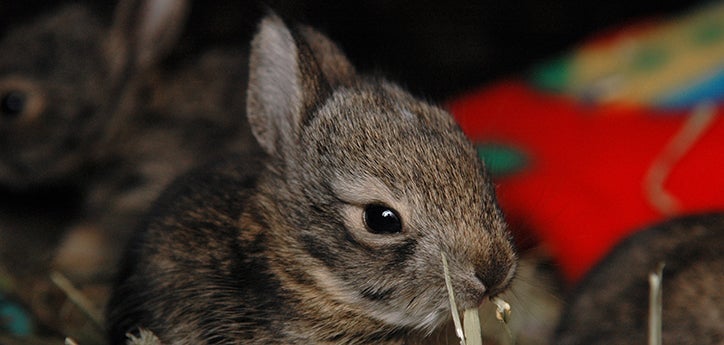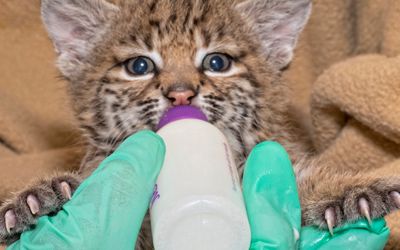Comprehensive Solutions for Wildlife Removal Burlington: Securing Your Home
Comprehensive Solutions for Wildlife Removal Burlington: Securing Your Home
Blog Article
Effective Wildlife Removal Methods for a Peaceful Home Setting
In the search of preserving a serene living room, homeowners commonly encounter the obstacle of wildlife intrusions, which can disrupt the serenity of their environment. Executing efficient wildlife removal techniques needs a nuanced understanding of both humane exclusion techniques and preventative steps. By dealing with entrance points and reducing attractants, one can considerably decrease the possibility of uninvited guests. The intricacy of these techniques frequently necessitates a more detailed assessment of certain methods and the potential demand for expert intervention. What are the vital parts of these strategies, and when should one take into consideration seeking expert aid?
Identifying Common Wildlife Intruders
Recognizing typical wild animals trespassers is a crucial initial step in reliable wildlife monitoring. Understanding the details species that regularly infiltrate industrial and residential areas enables homeowner and wild animals professionals to apply targeted strategies for minimizing prospective damages and health dangers. Typical intruders frequently include raccoons, squirrels, bats, and various types of birds and rats, each bringing distinct obstacles.
Raccoons, for instance, are known for their dexterity and can trigger substantial structural damage while seeking food or sanctuary. Squirrels, with their tendency for gnawing, can harm electric circuitry, posing fire risks. Bats, while valuable for controlling insect populations, can become a problem when they roost in attics, potentially spreading illness such as histoplasmosis. Birds, consisting of sparrows and pigeons, usually develop unhygienic problems with their droppings, bring about architectural destruction and wellness concerns. Rats, such as rats and computer mice, are infamous for their quick recreation and capability to penetrate little openings, presenting major health and wellness dangers due to their ability to spread out conditions.
Humane Exemption Methods
Comprehending the common wild animals burglars is the foundation whereupon reliable exemption techniques are constructed. Recognizing species such as squirrels, birds, and raccoons assists in designing gentle exclusion strategies tailored to specific actions and entrance methods. Exemption is a preventative method targeted at refuting wildlife accessibility to residential or commercial properties and homes, hence minimizing the need for even more intrusive procedures.
The foundation of gentle exemption involves sealing potential entry points. Furthermore, making sure that doors and home windows are safe and secure, and that displays are undamaged, can better deter entry.
Another key technique is using auditory and visual deterrents. Installing ultrasonic devices or motion-activated lights can dissuade nocturnal wildlife. Customizing the environment by taking care of food resources, such as safeguarding garbage containers and removing bird feeders, also plays an essential duty. These exemption approaches not just protect the home environment but additionally value the wild animals, permitting them to flourish in their natural habitats without damage.
Safe Trapping Methods
When exemption methods want, safe capturing methods come to be an essential choice in wildlife monitoring. Trapping, when executed appropriately, provides a humane and effective ways of attending to an immediate wild animals problem while making certain very little stress and injury to the animal. This technique requires an understanding of both the actions of the target species and the moral link considerations associated with wildlife handling.
The initial step in risk-free capturing includes picking the suitable catch type. Live catches, such as cage traps, are normally advised as they enable the capture and release of the pet elsewhere. These catches must be inspected regularly to avoid excessive stress or injury to the caught wildlife. It is vital to comply with neighborhood policies relating to trapping and moving to guarantee conformity with lawful standards and wildlife preservation concepts. burlington wildlife rescue.
Furthermore, lure option and positioning are critical components in guaranteeing effective capturing. Lure needs to be picked based upon the dietary preferences of the target species and tactically put to tempt the pet right into the catch. Once caught, the pet needs to be managed with care, using protective gear if necessary, to facilitate safe transportation and launch, consequently preserving a serene home and a balanced ecosystem setting.
Preventive Home Adjustments
While risk-free trapping approaches attend to immediate wild animals concerns, long-lasting solutions frequently entail preventative home alterations to discourage animals from getting in human areas. Implementing these alterations not only enhances the safety and convenience of your living environment yet likewise reduces the chance of future wildlife intrusions.
An important aspect you can check here of preventative methods is securing potential entrance factors. This involves checking and fixing any type of voids or cracks in the foundation, wall surfaces, and roof, as these can end up being accessibility courses for wildlife. Mounting smokeshaft caps and repairing damaged vents can stop birds, bats, and rats from acquiring entrance. In a similar way, securing windows and doors with weather condition removing and mesh screens adds an extra layer of defense.
Landscaping adjustments can additionally act as reliable deterrents. Trimming tree branches that overhang the roofing system and eliminating debris heaps can remove courses and environments that bring in wildlife. Maintaining a clean yard by securing trash can and garden compost stacks discourages scavengers such as raccoons and opossums.

When to Call Professionals,##.
Professional treatment ends up being critical in situations where wildlife issues exceed the scope of DIY services. House owners might come across conditions where the intricacy or threat of the wild animals issue requires expert know-how.
In addition, problems including secured or threatened species require a nuanced approach to abide by lawful regulations. Professionals are furnished with the required permits and understand the lawful frameworks controling the handling of such species. This ensures that elimination is conducted fairly and within legal boundaries.

Finally, when wild animals positions a consistent trouble despite repeated do it this yourself initiatives, professional services can supply comprehensive assessment and lasting solutions tailored to protect against recurrence - burlington wildlife rescue. Their proficiency not only solves the prompt issue but likewise safeguards the home atmosphere in the future
Verdict
Executing reliable wild animals removal techniques is vital for maintaining a serene home atmosphere. Together, these approaches develop a harmonious living space cost-free from wild animals disturbances.
These exclusion approaches not just safeguard the home atmosphere yet also appreciate the wild animals, permitting them to thrive in their natural habitats without damage.
Applying effective wildlife removal methods is essential for maintaining a relaxed home setting.
Report this page